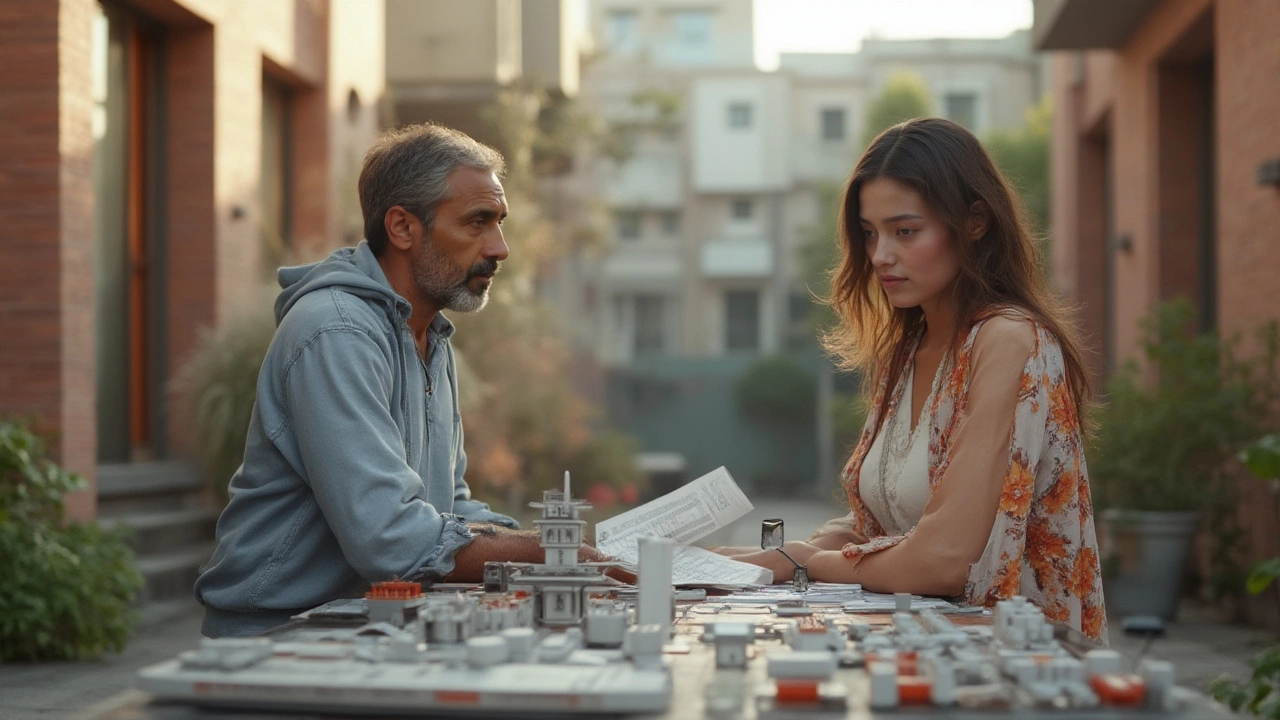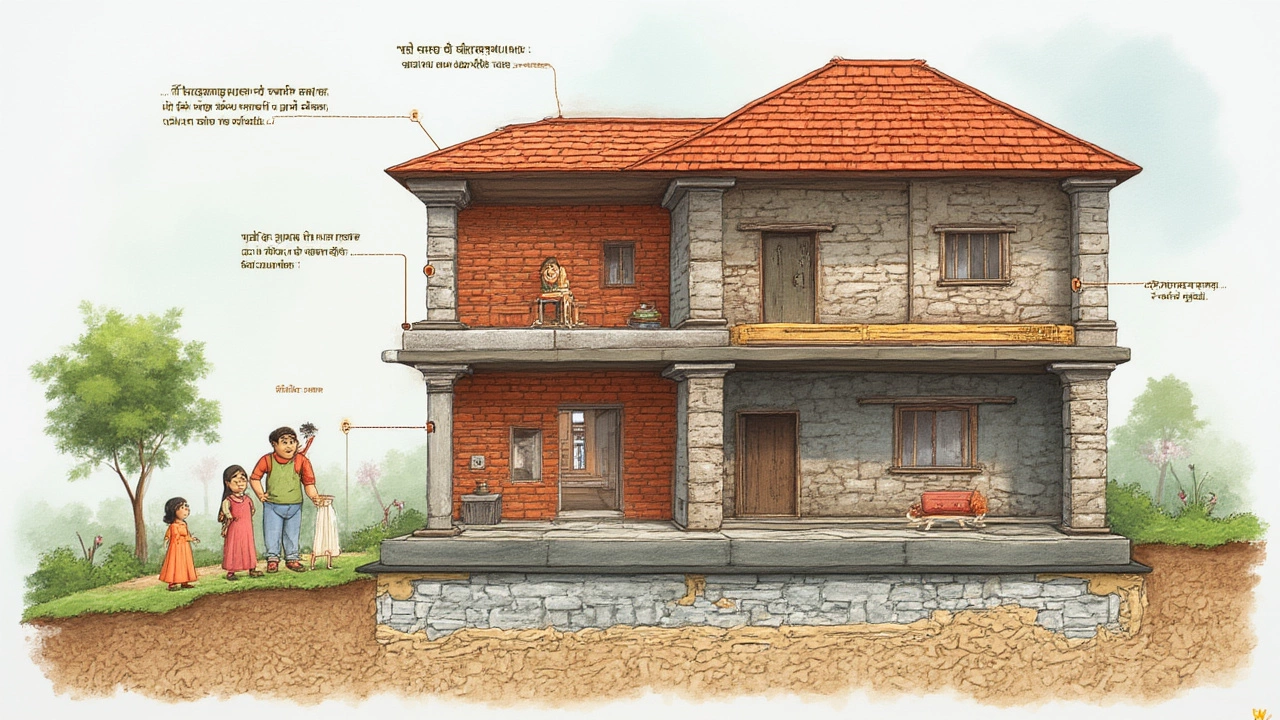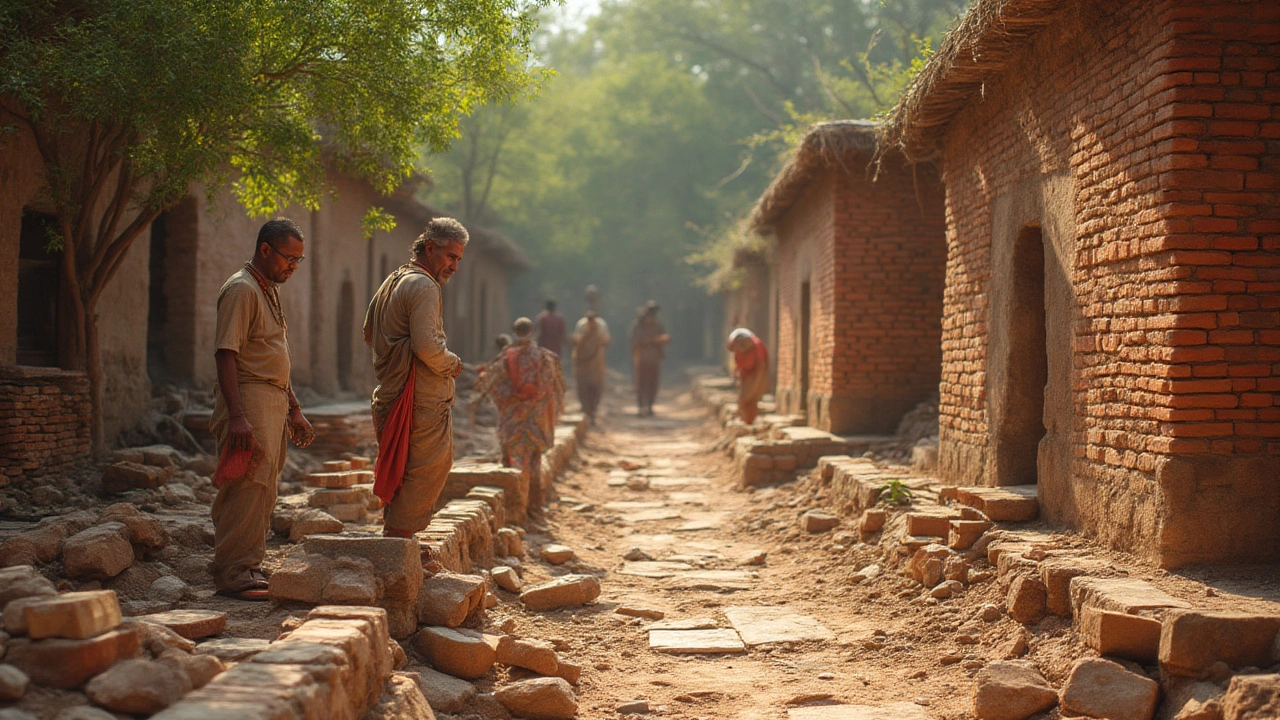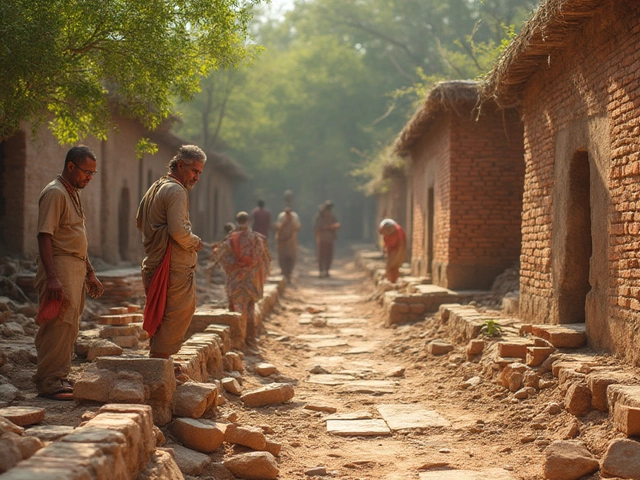Imagine living in a house that outlasts generations—watching nearby neighborhoods change as your home barely ages. Castles in Scotland, temples in India, and pyramids in Egypt all have something in common: they're rooted in materials that scoff at time itself. Even today, people want homes they’ll never have to fully rebuild, just maybe tweak and upgrade. The burning question is, what actually gives a house an immortal backbone?
The Endurance Champions: Stone, Brick, and Concrete
When it comes to materials that pull their weight for centuries, stone always grabs the spotlight. It doesn’t rot, burn, or crumble easily. The oldest occupied stone house in the world, Knap of Howar in Scotland, is over 5,000 years old. Those walls have seen everything from invasions to stormy winters, yet they’re barely bothered. Stone resists weather, bugs, fire, and even most earthquakes. Granite, limestone, and basalt show up in old bridges and fortresses for a reason. Brick comes right after. It might seem less tough than stone, but bricks cooked at high temperatures create walls that last. Think of the Great Wall of China—sections built over 2,000 years ago are still standing. Modern fired-clay bricks can withstand high pressure, wild swings in temperature, and relentless rain.
Concrete sits in that legendary club too. Romans made the Pantheon’s dome with a mix of volcanic ash and lime over 2,000 years ago, and it’s still there. Today's concrete gets steel bars inside it—reinforced concrete—which lets it handle more weight and shocks. But there's a catch: steel inside can rust, especially in salty air, unless it’s protected. The right concrete mix can last 50 to 200 years, even up to 2,000 if it’s high-grade and cared for.
Marrying these materials—like stone exteriors with concrete foundations—creates homes that almost feel immortal. Brick veneer over reinforced concrete? That combo checks so many boxes for weather, fire, and pests that insurance companies instantly relax.
Let’s check some real-world numbers for perspective:
| Material | Typical Lifespan (Years) |
|---|---|
| Stone | 500+ |
| Brick | 100-300 |
| Concrete (reinforced) | 50-200 (with maintenance) |
| Wood | 30-100 |
| Steel | 50-100 (can corrode) |
| Modern Composites | 50-200 |
What Makes a Material Last?
Toughness doesn’t just happen—materials earn it. Stone owes its long life to density and a lack of moisture pockets. Water can’t easily seep in, freeze, and bust it up from the inside. That explains why stone houses handle icy European or Canadian winters so well. Bricks have their own secret; their tight, baked structure shrugs off moisture, and each brick is nearly identical because it’s factory-made nowadays. If one cracks, it’s simple to swap out.
Concrete lasts when it’s mixed just right, poured properly, and isn’t exposed to too much water or salt. Reinforced concrete holds up when the steel rods inside don’t rust. The key for all these? Making sure water doesn’t sneak in. Every time you hear about crumbling concrete, blame water and air sneaking through cracks. So, regular inspection and sealing make a massive difference—think of it as sunscreen for your house.
UV light, storms, and shifting ground challenge any structure. Tough buildings need tough foundations, too. Oldest stone houses and historic European townhomes often have fat, deep stone walls sitting on equally beefy foundations. Builders there aimed for permanence, sometimes burying two or three layers of brick or stone before even starting the real walls. That’s why those places remain steady even as the earth slowly shifts.

How Modern Alternatives Stack Up
It’s tempting to dream about some space-age material that outlives stone and brick. Truth is, nobody's cooked up anything way better yet, just stuff that ties or comes close. Fiber cement board, for example, gives wood a run for its money—it won’t rot, bugs hate it, and paint sticks well for years. It’s common in places where storms and wildfires hit hard.
Then there’s engineered wood. You can’t compare it to ancient granite, but with careful treatment for moisture and bugs, it’s decent for decades if not centuries. Modern synthetic stucco—called EIFS (Exterior Insulation and Finish System)—lasts around 50 years when installed by a pro, but if you mess up the flashing, water sneaks in and causes hidden rot.
Steel and aluminum frames pop up in hurricane-prone regions, standing strong against high winds and termites. Their main weakness is rust or corrosion if the protective coating gets scratched. Plastics and polymers show up sometimes, but most can’t handle long-term UV exposure, so they crack or fade over decades.
One of the cooler innovations lately is rammed earth. Builders compact layers of dirt, clay, a bit of cement, and sand into rock-solid walls a foot thick. With some cement mixed in and a good protective roof, these homes can last centuries, matching the life of ancient stone eco-homes. Modern rammed earth builders swear by its insulation and natural beauty. Just don’t skimp on the roof overhang, or your pretty earth house will melt in the rain.
If you’re looking at super-modern high-rises, they cling to steel and concrete, sometimes mixed with next-gen polymers or glass, but those are aimed more at architects’ dreams than family homes tinkering through generations.
Historic Proof: Materials That Defy Time
When in doubt, just look around. Start with the pyramids in Egypt. Stone, stacked with obsessive precision, has held up over 4,500 years of sandstorms, earthquakes, looters, and ‘just because’ tourists. Medieval castles in France, built from massive limestone blocks, only fall when people pull them apart for new buildings. The city walls of Dubrovnik, Croatia? They’ve checked enemies (and now tourists) for 800 years, thanks to thick brick and stone construction.
Homeowners in the US sometimes visit St. Augustine, Florida, and gape at Castillo de San Marcos. That Spanish fort, built of coquina stone (basically ancient compacted shells), has shrugged off both cannonballs and hurricanes since the late 1600s. In Mexico City, the National Palace still sits on top of old Aztec stone foundations more than 700 years old.
The secret? Builders in the past chose the best materials available. That often meant hauling rocks for miles, or shaping bricks on site. They paid obsessive attention to drainage, thick foundations, and sometimes overbuilt everything by today’s standards. These weren’t just houses—they were legacies meant to hold up against anything, including centuries of family squabbles and climate changes.

Making the Right Choice Today
So, if you’re planning your forever home, where does all this leave you? Stone and brick are unbeatable for sheer longevity—yes, they cost more upfront, but you’ll barely touch them once built. Concrete is a champ when reinforced well and protected from water. If you’re on a budget or living somewhere that isn’t stone country, fiber cement or quality brick veneer over concrete delivers decades of peace of mind.
- Tip: Don’t get seduced by a slick finish. Ask your builder about weather resistance, bug resistance, and how much patch-up you’ll need in 50 years.
- Check for local stone or brick. It’s often cheaper than hauling in fancy imported stuff, and it blends with the landscape, too.
- If you’re using concrete, insist on a water-resistant mix and good sealing—especially if you live where it rains hard or freezes.
- For rammed earth or alternative eco materials, find a builder who has actually lived in what they build. Experience matters a ton.
- Think ahead: easier to build bigger roof eaves and tougher foundations now than repair water damage later.
The truth is, the most longest lasting material to build a house with is stone. Brick and top-shelf concrete are close behind, especially when paired with smart design and decent upkeep. There’s no shortcut—picking truly durable materials means you’re giving a gift to future generations, not just yourself. Your grandkids could be watching the world spin past from the same sunlit window you do today. That’s a legacy worth building on.

